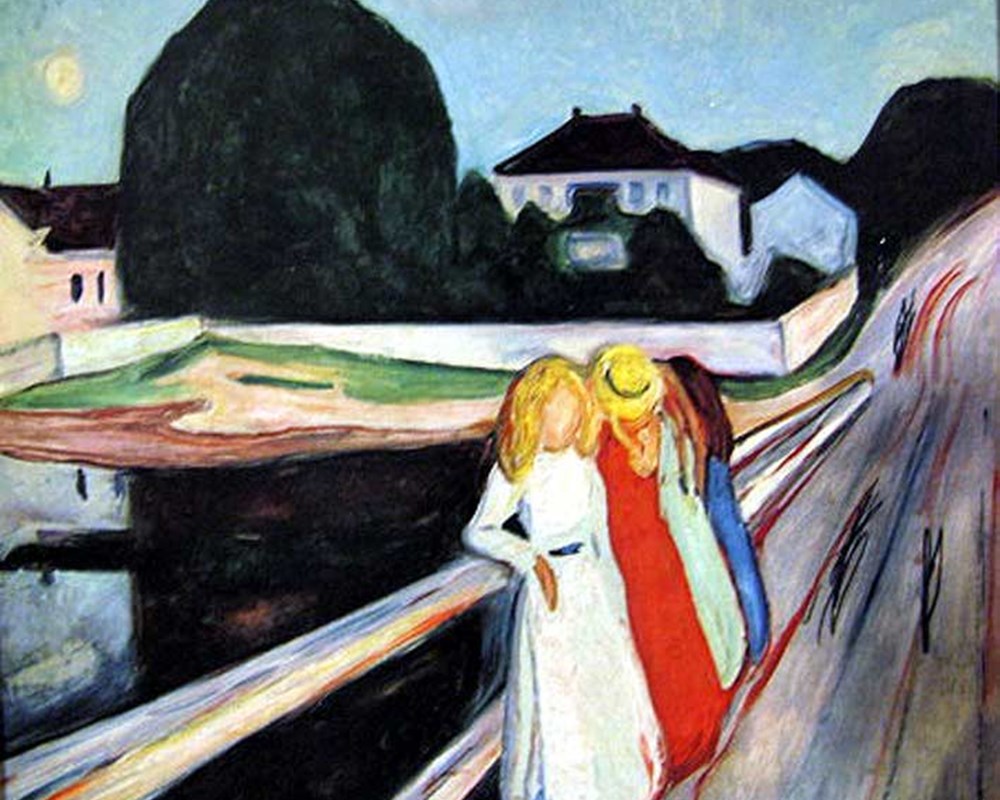

Edvard Munch in Åsgårdstrand
Art history was never the same again after Edvard Munch – Nor was Åsgårdstrand.
The place proved liberating for Munch as an artist painting the spiritual life of modern humanity. It was here the artist found decades of inspiration, as well as inner calm and friendship. It was here he turned away from the realism of the 1880s and realigned his romanticism in the greatest that nature has to offer: life itself. And here the landscape becomes a living element in his art. It is here that Munch becomes the painter of the light, shadowless, Nordic summer night.
The human dramas in The Frieze of Life – Munch’s great artistic project – find their landscape and setting in Åsgårdstrand: “The Frieze is conceived as a series of decorative pictures which, taken together, shall provide a picture of life. The meandering shoreline winds through them, beyond lies the sea, which is always in motion, and, beneath the crowns of the trees, diverse life is lived in all its joys and sorrows.”
For the first few years, Munch and his family rent rooms at various addresses. After nine summers at Åsgårdstrand, in 1898, Munch buys his first property, the building that now houses the museum. Following the purchase, it seems Munch gest an even stronger relationship to the place. He describes the feelings to do with having the first home of his own: “It was strange to be so much with oneself – in one’s own home. No one needed to disturb him. It was his property. It had not cost much and was not grand, but it was his, and in the garden were all his trees – the stones – the birds – the beach – and the water washing the stones. It was his sky above and his stars...”
Munch’s subject matter now changes focus and, in the years to come, paints a long line of pictures depicting the garden and the house and daily life in the town. It is during this period he paints ‘The Girls on the Bridge’. His models become neighbours’ children, fishermen, helpers, friends and acquaintances. He is well liked by the local people, who speak of a hard-working, honest, generous man who sends money for the poor, gifts and birthday cards from abroad. In his Aunt Karen’s words: “We enjoy great respect here among the population for your sake – full credit with the fishermen – for when we do not have money on us, hearing your name is enough.”
It was to this house Munch longed to return from abroad or during periods when he felt depressed and tired. It was then a comfort to plan the next summer in Åsgårdstrand. “I hope for an early return to my house – I so long for my house and my work.”
In this way, Åsgårdstrand weaves like a common thread through large parts of Munch’s life and art. And today, visitors can wander in Munch’s footsteps, alone or on organised tours of Munch’s landscape: to the places he painted. You can visit and be shown around Munch’s House, which is, in fact, the world’s first Munch museum. Not only that, it is the only preserved intact home of the world-famous artist. A visit here touched people from all over the world.
The museum also offers various innovative digital experiences. Munch’s House has developed an app which makes it possible for visitors to get an impression of how important the garden and the property were to the artist. And in ‘Digital Munch’, in Åsgårdstrand’s old town hall, you can experience Åsgårdstrand, seen through Munch’s eyes. Here the universality of Munch's art is conveyed, here Munch's artwork from Åsgårdstrand is brought to life in a way that both surprises and stirs different emotions and moods.
Welcome to Munch’s Åsgårdstrand!



